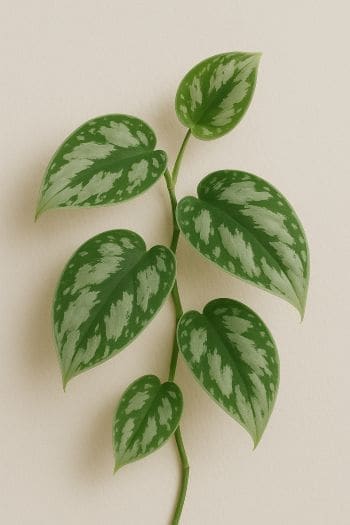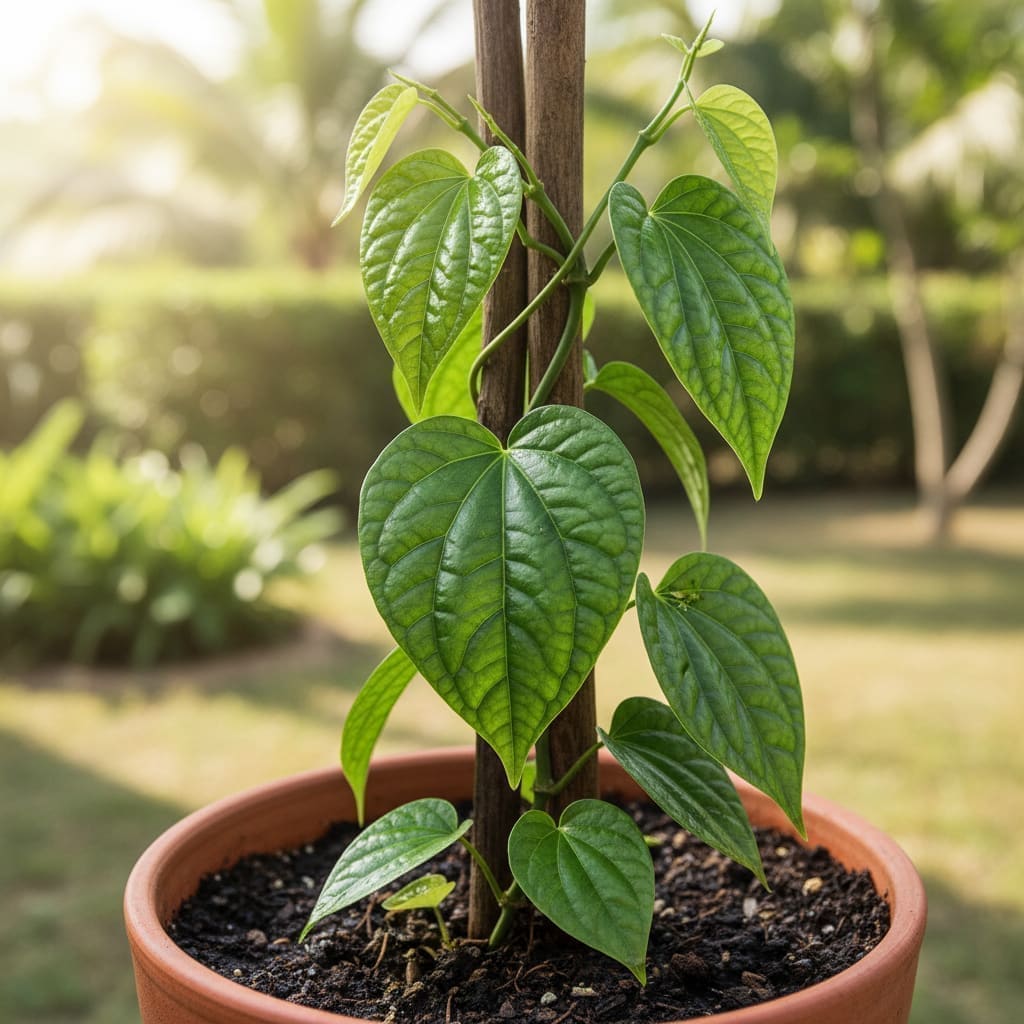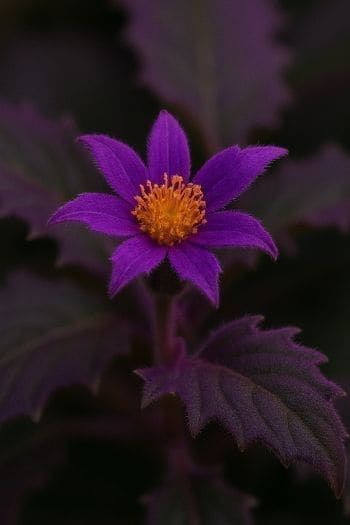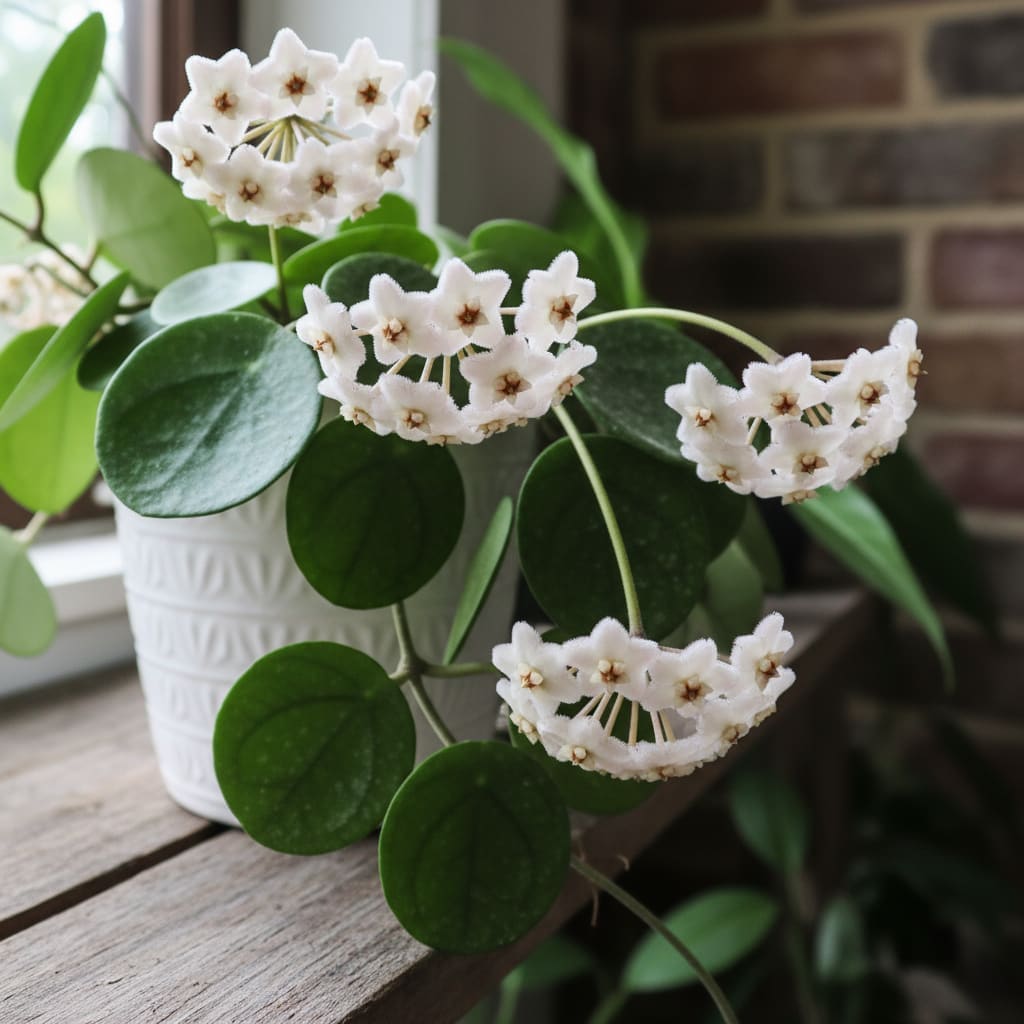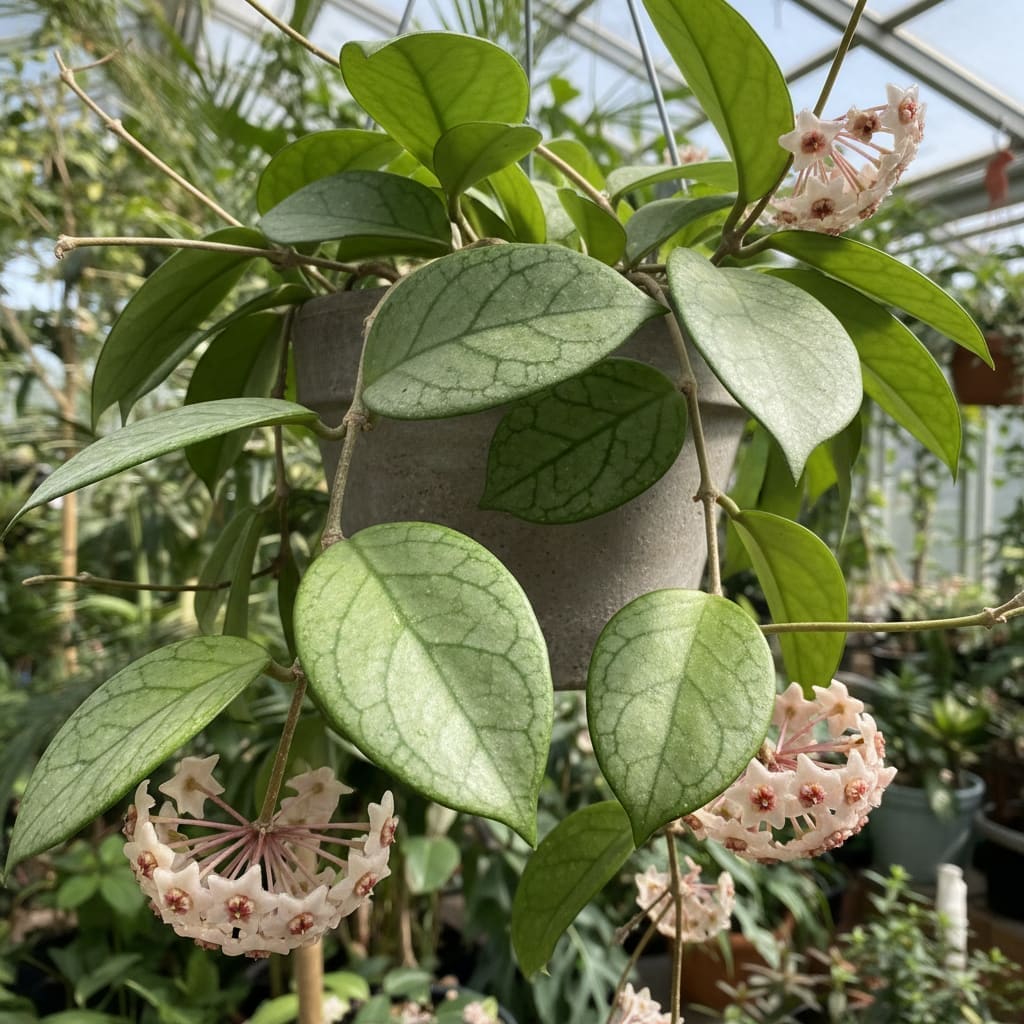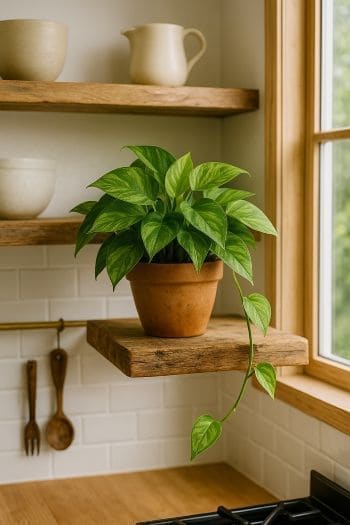Scindapsus pictus ‘Silvery Ann’ Care & Growing Guide
Overview
Scindapsus pictus ‘Silvery Ann’ is a striking trailing and climbing houseplant prized for its heart-shaped leaves adorned with shimmering silver variegation. Native to the humid tropical forests of Southeast Asia, this cultivar thrives in bright, indirect light and brings a touch of elegance to indoor spaces. Its adaptable nature makes it suitable for a variety of home environments, from hanging baskets to trained climbers on moss poles.
In its native habitat, this plant grows under the canopy, using its aerial roots to cling to trees. The silver markings are thought to aid in reflecting scarce light, allowing it to photosynthesize efficiently in low-light rainforest conditions.
Identification & Growth Habit
‘Silvery Ann’ features matte green leaves with irregular silver splashes and patches, often covering much of the leaf surface. The leaves are typically 2–4 inches long, with a slightly velvety texture. The plant has a trailing growth habit when left untrained, making it ideal for shelves or hanging planters. Given support, such as a trellis or moss pole, it will climb and produce larger leaves over time.
Light & Placement
Place your Scindapsus pictus ‘Silvery Ann’ in bright, indirect light for the best color and growth. Medium light is tolerated, but the silver variegation may diminish in lower light. Avoid direct sun, which can scorch the delicate foliage.
- Optimal placement: Near an east- or north-facing window, or a few feet back from a bright south- or west-facing window with sheer curtains.
- Low light adaptation: Growth will slow, and leaves may revert to more solid green tones.
Watering & Humidity
Water when the top 2–3 inches of soil feel dry to the touch. In summer, this often means watering weekly; in winter, reduce frequency as growth slows. Avoid letting the soil dry out completely for extended periods or become waterlogged, as both can damage roots.
- Humidity: Prefers high humidity (60%+), but adapts to average indoor levels. Boost humidity with a humidifier, pebble tray, or by grouping plants.
- Temperature: Maintain 65–85°F (18–29°C). Protect from cold drafts and sudden temperature swings.
Soil & Repotting
Use a well-draining soil mix—a blend of quality potting soil, perlite, and orchid bark works well. Ensure the pot has drainage holes to prevent water accumulation.
- Repotting: Every 1–2 years or when roots begin to circle the pot. Spring is the best time to repot, coinciding with active growth.
Fertilizing
Feed monthly during spring and summer with a balanced liquid houseplant fertilizer diluted to half strength. Stop fertilizing in autumn and winter when growth naturally slows.
Pruning & Training
Prune to control length, encourage bushier growth, and remove any damaged leaves. Use clean, sharp scissors or pruners.
- Training: Guide vines onto a moss pole, trellis, or wall hooks. Climbing can result in larger, more mature leaves.
- Trailing: Allow vines to cascade from shelves or hanging baskets for a softer look.
Propagation
Scindapsus pictus ‘Silvery Ann’ is easy to propagate via stem cuttings.
Step-by-Step Propagation
- Select a healthy vine and cut a segment with 2–3 nodes (points where leaves emerge).
- Remove the leaf closest to the cut end to expose a node.
- Place the cutting in water or directly into moist, well-draining soil. Ensure at least one node is submerged in water or buried in soil.
- If rooting in water, change the water every few days to keep it fresh.
- Once roots are 1–2 inches long (usually in a few weeks), pot the cutting in soil and care for it as a mature plant.
Common Problems
Pests
- Spider mites: Look for fine webbing and stippled leaves. Treat with insecticidal soap or neem oil.
- Mealybugs: White cottony clusters on stems and leaves. Remove manually and treat with horticultural oil.
- Scale insects: Brown bumps on stems. Scrape off gently and apply insecticidal treatment.
Diseases
- Root rot: Caused by overwatering or poor drainage. Remove affected roots, repot in fresh soil, and adjust watering.
- Leaf spot: Fungal or bacterial; remove affected leaves, improve air circulation, and avoid overhead watering.
Toxicity & Pet Safety
Scindapsus pictus ‘Silvery Ann’ is toxic to cats, dogs, and humans if ingested, due to insoluble calcium oxalates. Keep out of reach of pets and children.
Styling & Decor Tips
- Use in hanging baskets to showcase trailing vines.
- Train up a moss pole for a vertical accent in plant displays.
- Pair with plants of contrasting leaf shapes and colors for visual interest.
- Place against a light-colored wall to highlight the silver variegation.
Varieties & Cultivars
Scindapsus pictus has several popular cultivars:
- ‘Exotica’: Larger leaves with more extensive silver markings.
- ‘Argyraeus’: Smaller leaves with fine silver speckles.
- ‘Silvery Ann’: Noted for irregular, often extensive silver patches, sometimes covering entire leaf halves.
Buying Tips & Maturity
When purchasing, select plants with vibrant, firm leaves and no signs of pests or yellowing. Check the undersides of leaves and along stems. Younger plants may have smaller leaves; with time and proper support, mature plants can develop larger foliage.
Seasonal Care
- Spring/Summer: Active growth; water regularly, fertilize monthly, and consider repotting or propagating.
- Autumn/Winter: Growth slows; reduce watering, stop fertilizing, and maintain stable temperatures away from cold drafts.
FAQ
- How fast does Scindapsus pictus ‘Silvery Ann’ grow?
Growth is moderate; with optimal light and care, vines can extend several feet in a year. - Can it grow in low light?
Yes, but variegation may fade and growth will be slower. - Should I mist the leaves?
Occasional misting can help humidity, but avoid excessive wetting to reduce disease risk. - Why are my leaves curling?
Often due to underwatering, low humidity, or sudden temperature changes. Check soil moisture and environment. - Is it suitable for bathrooms?
Yes, if there is adequate indirect light; the higher humidity is beneficial.
Fun fact: The silver variegation on ‘Silvery Ann’ helps reflect light in its native rainforest understory, aiding survival in low-light environments.
Source: The Spruce
